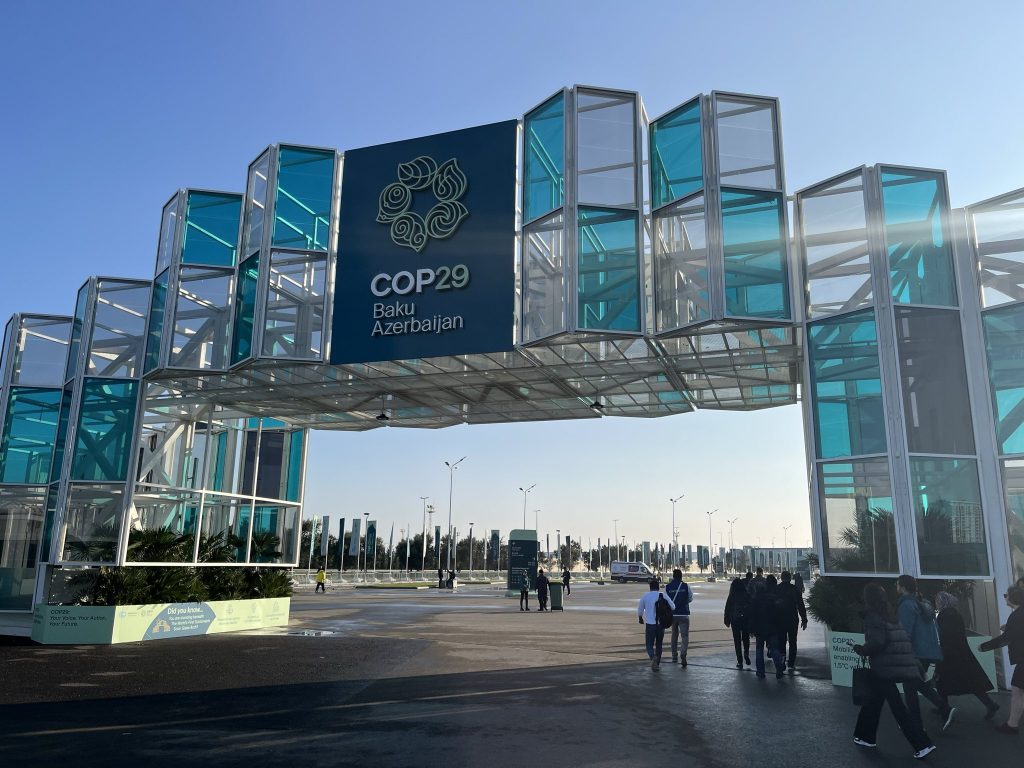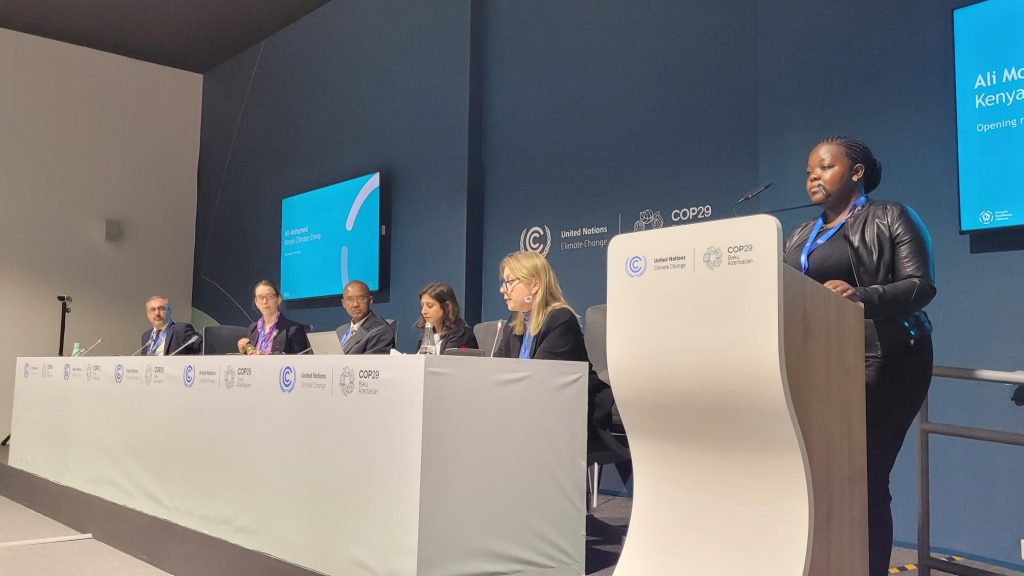As COP29 in Azerbaijan reaches its halfway mark, we’ve been observing strained negotiations. From the critical discussions on the creation of a new climate finance goal to negotiations on adaptation and mitigation, an ambitious outcome of this pivotal climate summit is still far from assured.

Climate finance: the key to progress
As we outlined one week ago, it’s clear that the New Collective Quantified Goal (NCQG) on climate finance is the linchpin of this COP. Every conversation in the negotiation halls – whether about adaptation, mitigation, or loss and damage – circles back to finance. Developing countries are united in their call for a goal of at least $1.3 trillion annually in public, grant-based or highly concessional finance. They have also called for urgent action to improve access to funds, particularly in the context of debt crises many climate-vulnerable countries are facing, and to establish innovative sources of funding like levies on polluting activities.
To help meet this goal, the Coalition for Solidarity Levies is advocating for levies on shipping, aviation, and fossil fuel extraction which could generate an estimated $350 billion annually—resources that could transform the landscape of climate finance. Speaking at the Alliance side event on the NCQG, one of the founding members of the Coalition, Kenya’s Climate Envoy Ali Mohamed said, “The only way to unlock the finance needed is through finding new sources of finance”.
Unfortunately, financial pledges so far have fallen alarmingly short. For instance, the Adaptation Fund has secured only $61 million of its $300 million target for this year, and the newly created Fund for Responding to Loss and Damage (FRLD) only received one new commitment of $18 million this week. These shortfalls highlight the urgency of ensuring that the NCQG includes ambitious, equity-driven subgoals for adaptation and loss and damage.
Finance issues impacting on Adaptation and Loss and Damage progress
Adaptation and Loss & Damage (L&D) remain essential pillars of climate action, yet both are constrained by the broader finance gridlock. On adaptation, negotiators are discussing recommendations for National Adaptation Plans (NAPs), as well as the development of indicators for the Global Goal on Adaptation (GGA). Finance is the main contentious issue in these discussions and might not be resolved in the absence of clarity on the NCQG.
The establishment of the Fund for Responding to Loss and Damage (FRLD) last year was a major milestone, and this year further moved the fund forward with the signing of the host country agreement with the Philippines, and the launch of the Annual High-Level Dialogue on complementarity and coherence. However, a fund is only operational if it’s financed, and with financial pledges of less than $800m from this year and last year, there’s a disconnect between rhetoric and action.
Meanwhile, negotiations on L&D – on the progress of the Warsaw International Mechanism (WIM) and the Santiago Network for Loss and Damage, – started constructively, including broad agreement on the need for a L&D equivalent of the Adaptation Gap Report to better understand and quantify the financial needs to address climate-induced losses and damages. However, by the end of the week, persistent divisions led to a potential deferral of decisions to the Bonn sessions next year. This is disappointing news, as a strong outcome on the review of the WIM would have further solidified the critical role of L&D in climate action.

Why finance cannot wait
Finance is the linchpin of climate action. Without it, adaptation measures remain unfunded, the costs of losses and damages are borne by those who did not cause the climate crisis, and the necessary mitigation efforts falter. At the Alliance NCQG side event last week, Gloria Namakula, a youth activist from Uganda, brought the urgency of finance into sharp focus:
“Most people in my village have never heard of climate change, let alone climate finance. If only the polluters who created this nightmare would invest in resources and education, we wouldn’t have to live this way. I beg you all to rise to this moment and choose equity over exploitation.”
Igor Paunovic of UNCTAD echoed this sentiment, emphasizing that the current finance system perpetuates inequalities and exacerbates debt crises: “Climate finance can only be grants or highly concessional loans.”
The stakes couldn’t be higher. Every day without action compounds the suffering of millions facing rising seas, failed crops, and intensifying disasters. Meanwhile, the financial cost of addressing these crises continues to grow.
Crunch time at COP29
The coming week will determine whether COP29 can deliver meaningful progress. Failing to do so could put the goals of the Paris Agreement beyond reach. Negotiators must prioritize equity and ambition in the NCQG, ensuring it is not only a number but a transformative framework that accelerates action on mitigation, adaptation, and loss and damage. This is the moment for countries to step up – to commit to the innovative solutions and bold funding mechanisms needed to meet the climate crisis head-on. We’ll continue to be here, observing, engaging, and advocating, and we’ll report back after COP29 concludes with reflections on whether the summit delivered on its promise. For now, a more resilient future – backed by climate finance that is truly reflective of developing countries’ needs – remains within reach.
Keep up to date with the Zurich Climate Resilience Alliance at COP29 by following us on LinkedIn and X.

Comments